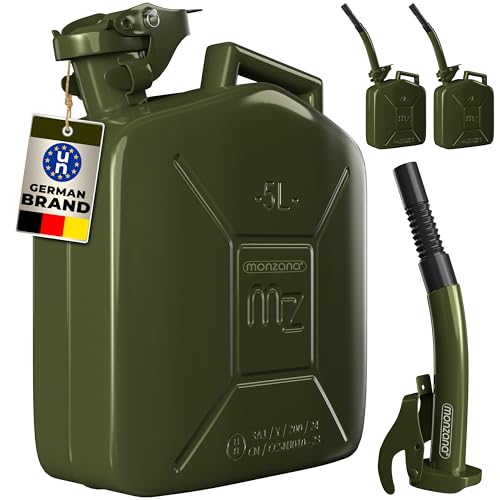

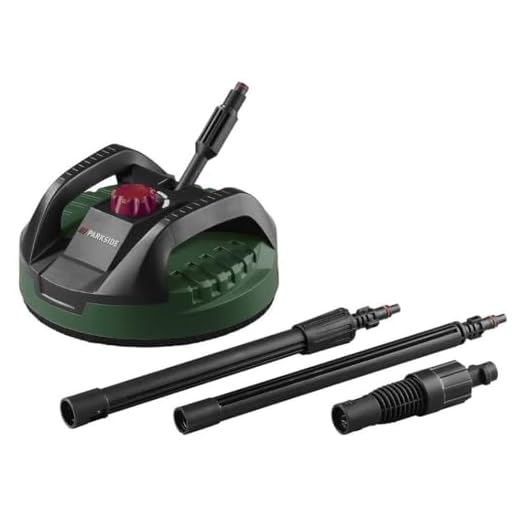

For those looking to elevate their cleaning tasks, integrating an auxiliary tool can significantly maximise reach and efficiency. Attaching this accessory not only extends your range but also improves your posture, reducing strain during extended periods of usage. Positioning yourself effectively while operating is key; it allows for a more comfortable and controlled experience.
Ensure that the tool is securely mounted before commencing your work. A tight fit prevents any accidental disconnections while you’re tackling those hard-to-reach places, such as high walls or under vehicles. Gripping the handle firmly and keeping a steady stance will contribute to more precise cleaning, allowing you to focus on stubborn grime without unnecessary effort.
Adjusting the spray angle can greatly influence the outcome. Experiment with various settings to find the one that best suits the surface you’re addressing; different textures may require tailored approaches. Always start at a safe distance to avoid damaging delicate finishes, gradually moving closer as you assess the reaction of the surface.
Regular maintenance of the equipment should not be overlooked. After each cleaning session, inspect the tool for any signs of wear or blockage. Ensuring that it remains in top condition will enhance performance and longevity, providing you with consistent results time and again.
Choosing the Right Extension Rod for Your Karcher Pressure Washer
Prioritise compatibility over all else. Ensure the additional pole fits your specific machine model. Consult the product manual or the manufacturer’s website for details on compatible accessories. Many brands offer tailored options for their models, which guarantees optimal performance.
Length is another critical factor. Assess the cleaning tasks you’ll undertake. A longer pole allows you to reach elevated areas, such as second-storey windows or high ceilings. Conversely, shorter poles provide better control for ground-level cleaning. Choose based on your immediate needs.
Material influences durability and weight. Lightweight options made from aluminium or high-quality plastic reduce fatigue during extended cleaning; however, ensure they are still robust enough for the task. Consider the thickness – a sturdier design withstands more pressure without bending.
Connector design is equally important. Look for models with universal fit technology or compatible attachments that ensure a snug connection to avoid leaks or disconnections during operations. This aspect is fundamental for maintaining pressure consistency throughout your projects.
Evaluate the nozzle compatibility as well. Certain poles come with adjustable end nozzles that provide versatility for different cleaning challenges. Features like rotating nozzles add an advantage by enhancing the cleaning effectiveness for various surfaces.
Lastly, consider your budget. While investing in higher-quality poles can yield better results and longevity, plenty of affordable options offer reasonable durability. Conduct thorough research and compare reviews to find a balance between price and quality, ensuring satisfaction in your selection.
Proper Attachment of the Extension Rod to Your Cleaning Machine
To achieve optimal performance, securing the additional tool to your cleaning device correctly is essential. Begin by ensuring both components are powered down and disconnected from any electricity source.
Align the attachment point of the tool with the inlet connector of your device. There should be a noticeable notch or groove that indicates proper alignment. Gently push the tool in until you hear a click, indicating that it’s securely locked in place.
Next, check the locking mechanism. Most models have a locking pin or lever that must be engaged. This step prevents accidental detachment during operation. Consult your user manual for specific instructions relevant to your model, as mechanisms may vary.
After confirming a secure attachment, perform a physical check by gently tugging on the tool. If it remains firm, you’re ready for the task ahead.
Lastly, before commencing, inspect for any visible damage or debris around the connection points. Clean if necessary to ensure optimal functionality.
| Step | Action |
|---|---|
| 1 | Power off and disconnect |
| 2 | Align and insert |
| 3 | Engage locking mechanism |
| 4 | Check stability |
| 5 | Inspect for damage |
Understanding the Optimal Operating Angle with the Extension Rod
Maintain a 15-30 degree angle between the nozzle and the surface being cleaned. This positioning ensures that the water jet effectively lifts dirt without causing damage. Adjust this angle based on the cleaning surface; for softer materials like wood, a shallower angle reduces the risk of damage, while harder surfaces allow for a more direct approach.
Maintaining Consistent Motion
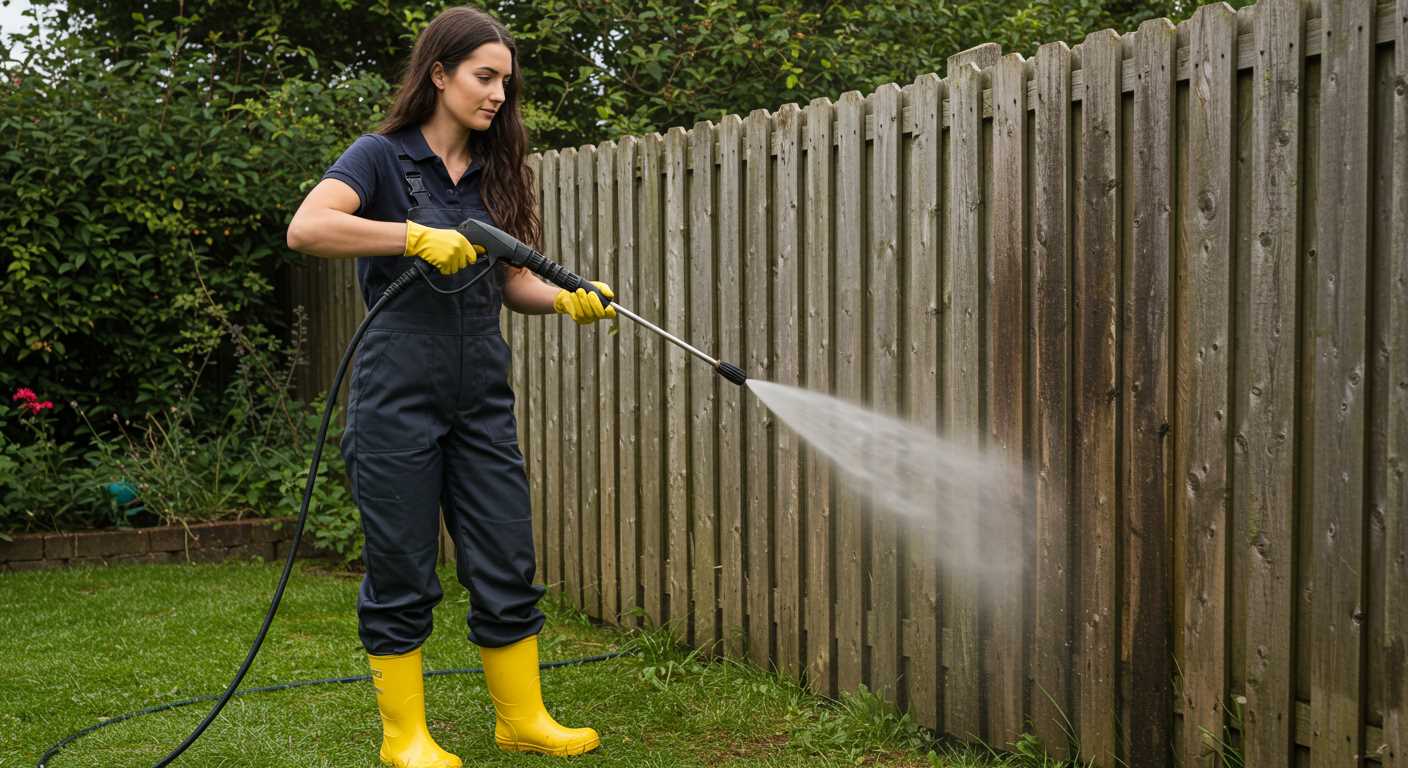
To achieve the best results, keep the cleaning tool moving steadily. Avoid holding it in one spot, as this can lead to surface degradation. For larger areas, overlap each pass slightly to ensure thorough cleaning. Keeping a consistent distance of about 12 inches between the nozzle and the surface enhances efficiency and cleaning power.
Adjusting for Different Tasks
For vertical surfaces, such as walls, tilt the tool upwards slightly to maintain pressure on the surface while avoiding overspray. Conversely, when cleaning horizontal surfaces, ensure the nozzle is angled downwards to direct water flow effectively. This small adjustment can significantly influence the quality of the finish.
Adjusting the Pressure Settings When Using the Extension Rod
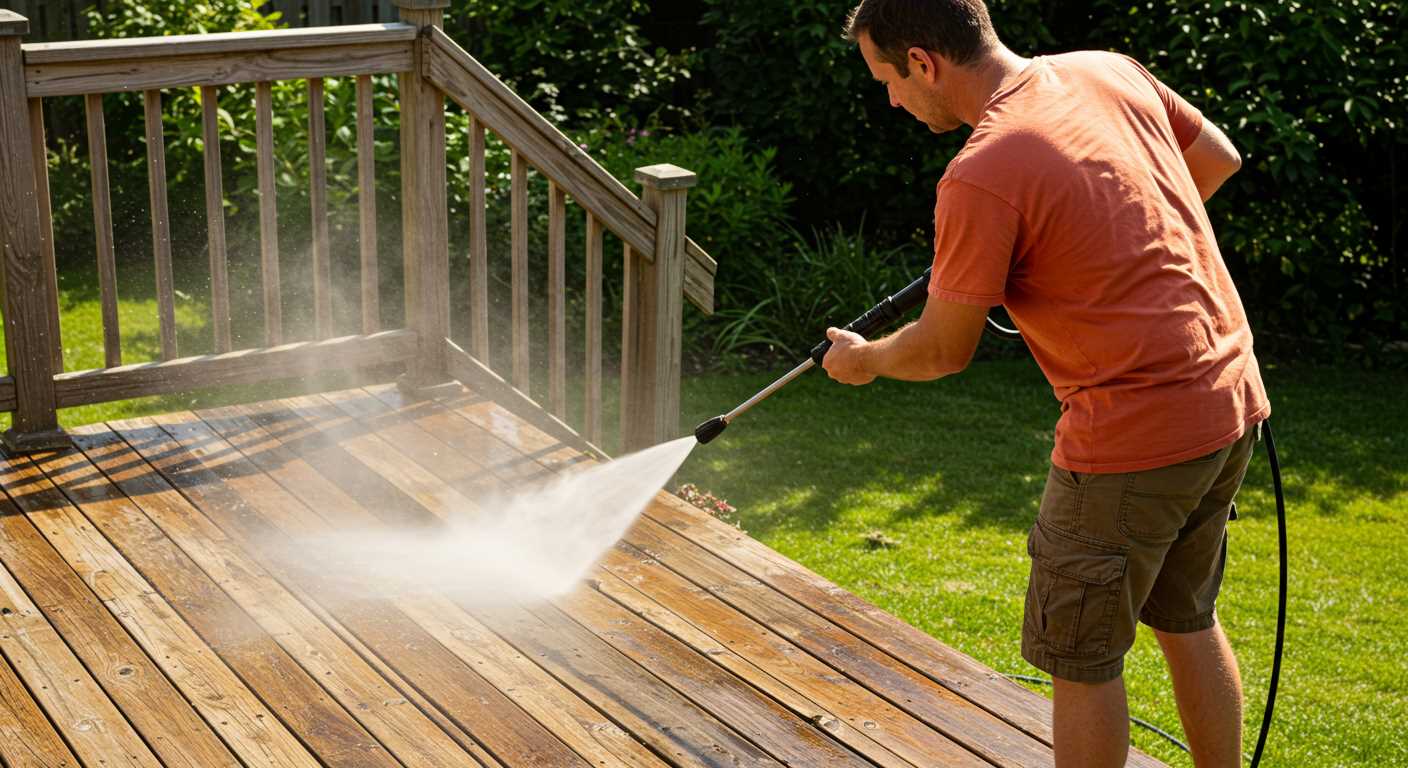
Start with the lowest setting on the unit. This prevents accidental damage to delicate surfaces while using the long attachment. Gradually increase the pressure as needed, testing on a small, inconspicuous area first.
Different tasks require varying levels of force. For instance, cleaning surfaces like brick or concrete can typically handle higher pressure. In contrast, softer materials such as wood or painted surfaces demand more caution and lower settings.
Monitoring the spray pattern is crucial. Adjustments may be necessary if the stream appears uneven or if particles are not being dislodged effectively. A narrow, concentrated jet may be suitable for stubborn grime, while a wider spray can suffice for less intensive cleaning.
Pay attention to the distance between the nozzle and the surface being cleaned. If the extension is too far from the area, increasing the force will be necessary; if too close, reduce it to avoid damage and conserve water.
Lastly, be aware that using the long reach equipment may impact how pressure is delivered. If you notice a drop in efficacy, check for any clogs or blockages in the attachment that could hinder performance. Regular maintenance of your device ensures optimal functionality.
Cleaning Tall Surfaces: Techniques with the Extension Rod
For tackling vertical areas, maintain a consistent distance of 2 to 3 feet from the surface to ensure adequate cleaning without damaging it. Start from the top and work downwards, allowing debris and water to flow down, preventing re-soiling of already cleaned sections.
Utilize a sweeping motion while keeping the nozzle moving. This helps distribute pressure evenly and avoids streaks. Adjust your body position to ensure you’re comfortable while keeping the nozzle directed towards the surface. A slight tilt towards the ground can help maintain an effective angle.
For surfaces with heavy dirt buildup, consider increasing the cleaning solution concentration. Apply it from the ground up, allowing it to penetrate grime before rinsing. This approach maximises cleaning efficiency as gravity aids in the removal of loosened dirt.
When cleaning windows or siding, opt for a fan spray pattern to cover larger areas without risking breakage. Always test on a small, inconspicuous area first, particularly on fragile surfaces like glass or painted wood.
After completing the task, clear any remaining solution from the nozzle to prevent clogging. Store the unit properly, ensuring all components, including the attachment, are adequately cleaned and dried. This will prolong the life of your equipment and enhance performance for future uses.
Safe Practices When Using the Extension Rod for High Reach Cleaning
Maintain a firm grip on the handle throughout the operation. Uneven surfaces can cause instability, so ensure your stance is secure. Position yourself at a safe distance to avoid potential backlash or debris.
Always inspect the accessory for any damage before each use. Check for cracks or wear that could compromise performance and safety. Replace damaged components immediately.
- Wear personal protective equipment, including goggles and gloves.
- Secure the area below before commencing; remove furniture or obstacles that could impede your work.
- Ensure the nozzle is suitable for tall surfaces to avoid excessive pressure that could cause damage.
Before starting, ensure the locking mechanism functions correctly to avoid accidental dislodgement during use. If possible, have someone assist you by holding the base of the cleaning device to prevent tipping.
Adjust the angle properly while operating. Keeping the cleaning attachment pointed downwards reduces the risk of water spray reflecting back. Maintain clearance from power lines and any electrical installations.
- Take breaks if you feel fatigued; this maintains control and focus.
- Monitor your surroundings continuously for any changes or potential hazards.
After cleaning, safely detach the accessory, ensuring the device is powered off. Store it in a designated place away from moisture, which prolongs the lifespan of the tool. Regular maintenance checks should be scheduled to ensure optimal safety and performance.
Maintenance Tips for Your Karcher Extension Rod
Ensure longevity by regularly inspecting for any signs of wear or damage. Look for cracks, bends, or other deformation in the material.
After each session, clean the implement thoroughly. Use a soft cloth to wipe away debris and residue. Avoid using harsh chemicals that may degrade the surface.
Store the tool in a dry location to prevent moisture-related issues. Hanging it up or keeping it elevated can avoid unnecessary pressure on joints and attachments.
Regularly check all connection points. Tighten screws and fittings if they become loose to ensure stability during operation.
Inspect the seals and gaskets periodically. Replace them as necessary to maintain optimal performance and prevent leaks.
- Use a mild detergent for cleaning, avoiding abrasive materials that can scratch surfaces.
- Lubricate moving parts occasionally with a silicone spray to aid in smooth operation.
- Keep the connectors free of debris to ensure a secure fit with the main apparatus.
- Avoid exposure to extreme temperatures, which can cause materials to warp or weaken.
Follow these maintenance practices to extend the lifespan and functionality of your cleaning tool, ensuring consistent performance when tackling challenging tasks.
Common Issues and Troubleshooting When Using the Extension Rod
One frequent challenge I encounter involves improper sealing between components. If you notice a reduction in water pressure or leaking, inspect connections for debris or damage. Ensuring a tight fit can often resolve the issue.
Inconsistent Cleaning Performance
If the cleaning results vary, check the nozzle. Clogs can occur, especially when using high pressure. Detach the nozzle and rinse it thoroughly to ensure there are no blockages affecting performance.
Difficulty Maintaining Angle and Reach
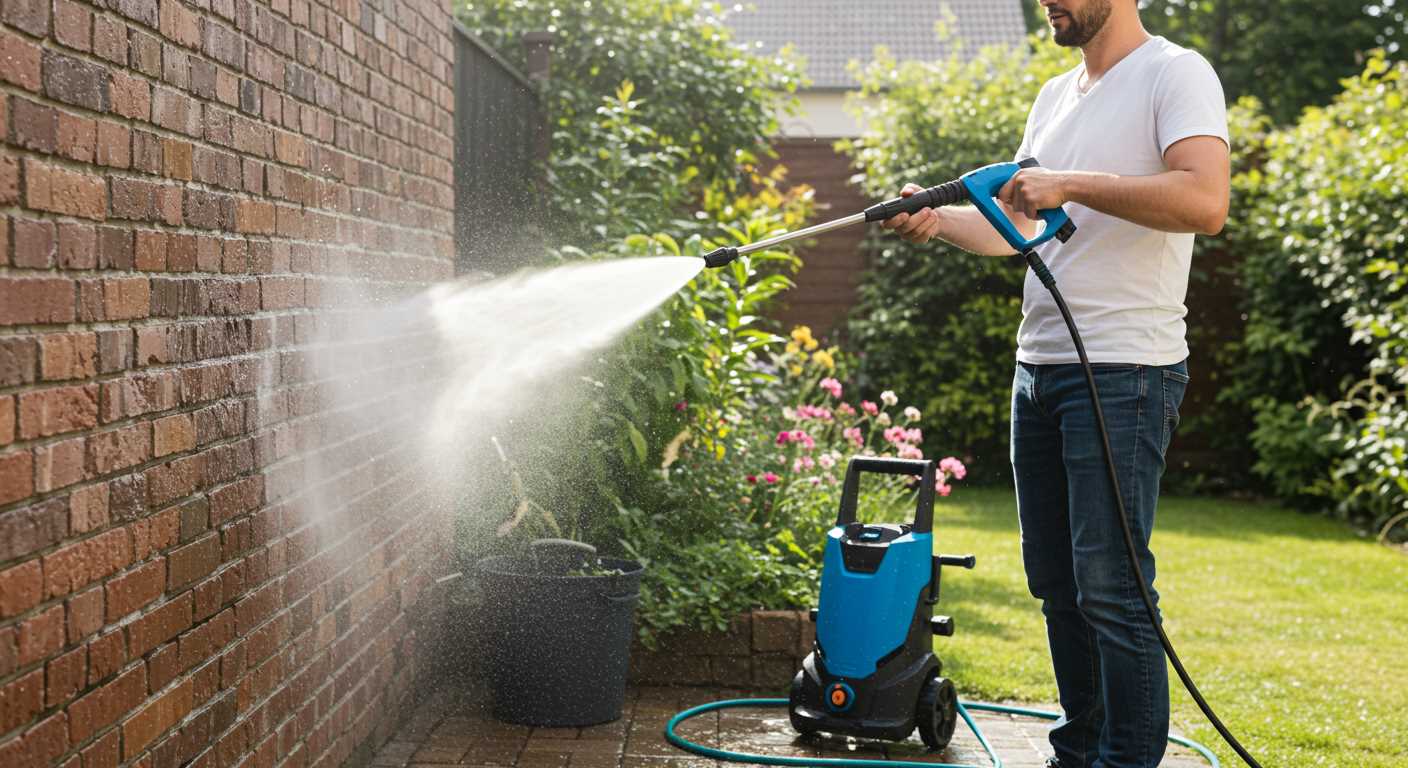
Struggling to keep the desired angle can lead to poor results. I recommend practising with the length and weight of the attachment at varying heights. If stability is an issue, consider using a second person to help support the equipment at difficult angles.
If you experience a lack of effectiveness, confirm that the pressure settings are correctly adjusted according to the surface being cleaned. Lower settings may be required for delicate materials, while higher pressures are suited for tougher grime.
Regular maintenance is vital. Inspect all parts routinely for wear, especially before and after extensive use. This foresight can prevent larger issues over time.
FAQ:
How do I attach the extension rod to my Karcher pressure washer?
To attach the extension rod to your Karcher pressure washer, first ensure the washer is turned off and disconnected from the power source. Locate the coupling at the end of the pressure washer wand. Simply slide the extension rod into the coupling until you hear a click, indicating it is securely locked in place. Make sure the connection is firm to prevent any water leakage during use. If your model comes with a safety latch, make sure it is engaged to keep the extension rod secured.
What types of cleaning tasks can I perform with a Karcher extension rod?
The Karcher extension rod is versatile and can be used for various cleaning tasks. It is particularly useful for reaching high or hard-to-access areas such as gutters, roofs, and second-storey windows without the need for a ladder. Additionally, you can use it to clean vehicles, patios, and fences more comfortably without bending or stretching too much. The extension rod enables you to maintain a good distance while applying pressure, helping you to clean efficiently and safely.
Are there any safety precautions I should take while using the extension rod?
Yes, safety is paramount when using a pressure washer with an extension rod. First, always wear appropriate personal protective equipment, such as safety goggles and gloves, to protect yourself from debris and spray. Ensure that the extension rod is properly secured to the pressure washer to avoid any disconnection during use. Also, take care not to point the nozzle at yourself or others, and avoid using it in wet conditions to prevent slipping. Always follow the manufacturer’s instructions for safe operation.
Can I use the extension rod with different Karcher models?
The compatibility of the extension rod depends on the model of the Karcher pressure washer you own. Most extension rods are designed to fit Karcher models that have the same fitting specifications. Check the product description or user manual of both the extension rod and your pressure washer to ensure they are compatible. If you are unsure, contacting Karcher customer service or visiting their official website can provide clarity on compatible models.
What maintenance does the extension rod require after use?
Maintaining your Karcher extension rod is relatively simple. After each use, it’s advisable to rinse the rod with clean water to remove any residue or dirt that may have accumulated. Inspect the connection points for any signs of wear or damage. If you notice any issues, it’s best to address them immediately to prevent further deterioration. Store the extension rod in a dry location, preferably indoors, to protect it from the elements and prolong its lifespan.


